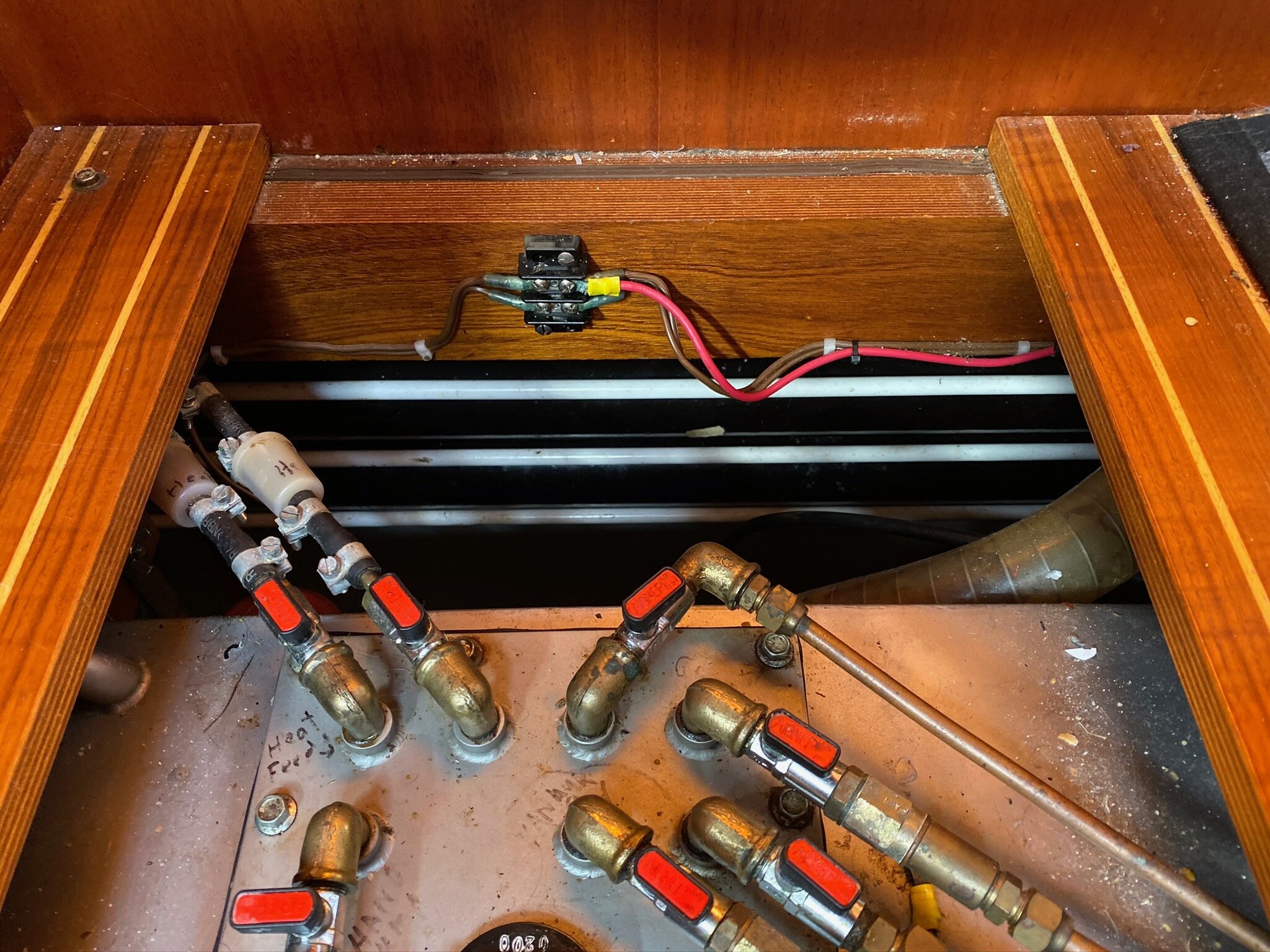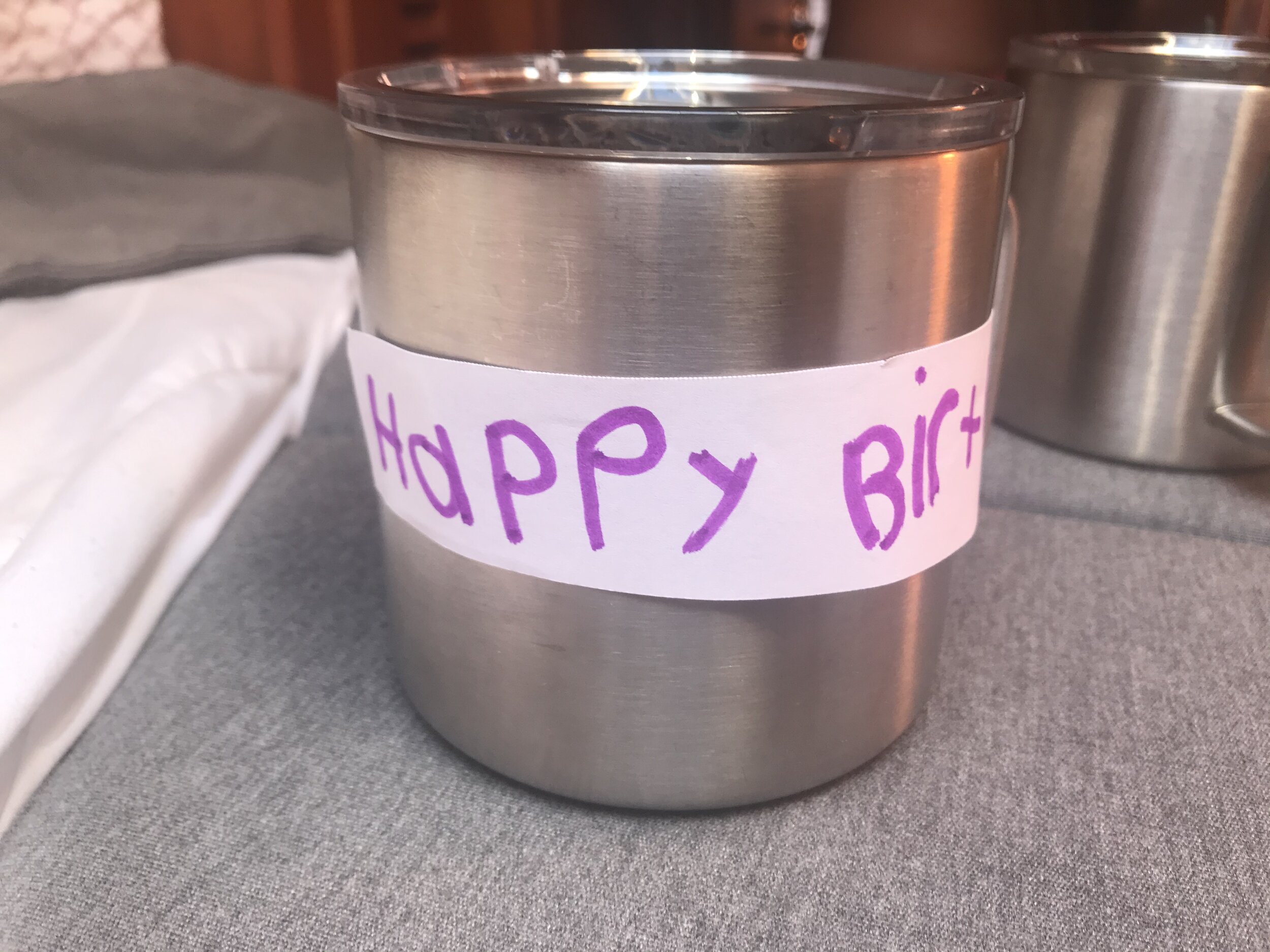Boat Life Basics: Water Part 1
This is the first instalment in a Series called “Boat Life Basics”. We thought we’d do this series in response to the most common questions we get from people who aren’t living on a sailboat…that is, most people ;) The questions we are asked most often relate to: Water, Food and Power.
********************
Sometimes it’s an odd feeling to be surrounded by nothing but water 24 hours a day and to still be watching the water level in our tanks like a hawk. Matriarch can carry approximately 950L of fresh water in her tanks which is enough to last a month if we’re careful with it, but that would require (a) minimal to no showering (b) minimal to no laundry and (c) very frugal dishwashing (i.e. washing with saltwater and then just rinsing with fresh on all accounts). We knew from the beginning that the ability to make fresh water was a requirement for us in a cruising boat, but it wasn’t until we left the marina, where an endless supply of potable water can be easily had from a hose, and entered the great wide open that it really hit home just how important it really is. Like life-altering, marital-bliss inducing, I-never-want-to-do-this-again vs. I-don’t-miss-home-at-all important.
Ok. Tell Me How This Water-Making Thing Works.
We have a reverse osmosis water maker that works by sucking sea water in using a ‘feed pump’, running that saltwater through a pre-filter to take out all of the big stuff, pumping up the pressure using a second ‘high pressure pump’, then forcing the salt water through a semi-permeable membrane (i.e. reverse osmosis) to filter out almost everything else but plain old H2O. In addition to filtering out salt (duh!), it also takes out minerals, metals, bacteria, viruses and almost anything else you can think of besides pesticides and herbicides (thankfully not a big concern in our case). The process begins with a back flush to clean out any gunk in the system from the last time it was run, followed by making freshwater and channelling it into the sink to make sure it’s clean and, you know, fresh, followed by sending the freshwater to the tanks for storage, followed by a final back-flush to leave the system as clean as when you started (in theory).
Step 1: Feed pump sucks in sea water. Here’s the feed pump, right on the engine room floor just to the port side of our main engine.
Step 2: Pre-filter. Here you’re actually seeing the back-flush filter (on the left), flow filter (on the right), control panel (far right), amongst various other stuff controlling flow through the system.
Step 3: High pressure pump cranks up the pressure to force salt water through the reverse osmosis membrane. This is located in the aft part of our engine room just behind the main engine.
Step 4: Reverse osmosis. This is the view right below our companionway stairs with the floorboard taken out. The black and white tubes at the top of the frame are the reverse osmosis membrane. The big tank taking up most of the shot is our main diesel tank.
It’s a great thing, except when you’re in an area where the water is full of organic material like we had in the Chesapeake Bay. In that case, you really don’t want to use the water maker because it won’t be long before the membrane is so clogged full of the stuff it’s filtering out that it won’t work, or worse yet, might break components that would need replacing. So when you’re not in an area with ‘clean’ water, you have to put the system into storage mode by pumping an antifreeze/preservative/anti-growth solution through the filters and membrane, a process known as ‘pickling’.
That’s how we started our travels, with a pickled water maker which we didn’t have the opportunity to test until we got offshore and away from all the junk common in coastal waters. What could possibly go wrong? Well not surprisingly, like almost everything else we tried for the first time, the water maker didn’t work. Ouch, that’s a pretty major problem when you’re not planning to be back in a marina or at a dock for the next several months.
Ok. So the Water Maker Doesn’t Work. Now What?
We were a couple hundred miles north of St Martin when finally the weather conditions allowed us to try firing up the water maker for the first time. Since we hadn’t been able to play around with it in advance, the procedure was new to us and required some consultation with the manual, which had some pretty big inconsistencies with the handwritten instructions from the previous owner. Great. Especially when, after going back and forth and reasoning out what I believed to be the correct start-up process, nothing happened. The generator was running, we had power to the pumps, but turning on the pumps resulted in zero water flow through the system.
NOTE: Knowing in advance we were going offshore with an untested water maker, and expecting the usual teething issues, we planned to make the voyage without the need to replenish the tanks. We filled up the tanks in Norfolk and again in Bermuda with plans to do so again in St. Martin if we couldn’t get the water maker working. We weren’t at risk of dying from thirst, just at risk of leaving a permanent stench in the boat due to the general lack of personal hygiene (i.e. saltwater showers only!). Our 950L would not last a month on passage because we had an additional 3 adults…conservatively we could have been good for 10 days at approximately 10L per person / day which would include drinking, cooking, showering, cleaning for each person. Of course it doesn’t really work that way…we will write about water use in the next post.
Next step, scramble around in the engine room where the pumps are mounted to try and figure out what the heck is going on. Pretty quickly we narrowed down the issue to the feed-pump which just wasn’t turning to suck in the sea water and provide flow to the rest of the system. We could hear it trying to turn when the power was switched on, but after cavorting upside down into just the right position I could clearly see the impeller shaft wasn’t moving at all. After trying for an hour or so to twist my arm and shoulder so I could get a pair of vice grips on the shaft so I could twist the shaft and hopefully and break whatever old corrosion or sea growth had caused it to seize, I gave up in frustration. At least we were in the trade winds at the time so the boat was sailing nicely and the motion was smooth and regular.
Next onto a much more sensible solution, albeit messy and time consuming. Dad and I disconnected the feed pump from the system, requiring both hoses and electrical connections to come off, then set up a pump rehab station on the salon table. We took the pump housing apart and went to town with the plethora of different penetrating lubricants we had on board. With some patience, elbow grease, real grease, and a fair amount of profanity, between the two of us we were able to get the pump turning like new.
That look says it all. Let’s rip this thing apart to see if we can get it working again.
Elbow grease + real grease = a spinning pump. Yes!
While Dad went back on watch (we were still at sea after all), or possibly to nap, I can’t quite remember, I reinstalled the feed pump and reconnected everything we had taken apart earlier. Fired the whole system up again and…. SUCCESS!! The sound of the pump turning and water flowing through was so, so sweet. I could almost feel that freshwater rinsing away all my saltiness…
Ok. So the Water Maker is Online. All Good?
Having a working water maker was like seeing the clouds part, the sun come shining through, hearing the birds start singing, etc. etc. But there are still a bunch of things we are always keeping in mind to make sure we never go back to the dark ages of freshwater rationing.
1. Avoid making water in a crowded anchorage… especially in the morning after coffee (eww). NOTE: See Liam’s post on how the boat heads (toilets) work if you don’t get what I’m talking about.
Why? Lots of stuff gets sucked in that you don’t want going through your filters. The water maker will take all of it out to be sure; however, we just don’t want the extra wear and tear. Plus… just eww.
2. Purify the water you’re going to drink.
Why? Ok hold on a second, I said the water maker creates perfectly pure water and sends it to the tanks so why doesn’t it need to be purified? Well if the tanks aren’t clean in the first place the water maker isn’t going to help. For example, we filled them from a hose in the USA and Bermuda. We don’t really know what was in that water other than it was ‘potable’, nor where the hose had been before being inserted into our tanks. Or the times Liam left the tank cap on the deck wide open for several hours after getting distracted. Anything could have gotten in then and started growing. The risk of a gastro illness with 3 kids and me as a diabetic on board is something we want to avoid. Hence, purification. We installed an Acuva UV-LED water purifier, and other than a very painful install process thanks to some universal fittings that weren’t so universal, it has been a great addition to our water systems.
Ahhh fresh, clean drinking water. That handy blue light at the base of the faucet lets us know it’s being UV purified on it’s way to the tap.
3. Capture water when it’s freely available.
Why? Well because…it’s free. Running the water maker means we have to run the generator. Which means we have to burn diesel and put wear and tear on the generator. When it rains obviously none of these other components are required (since the purifier runs automatically when we turn on the tap). We don’t currently do this but I am planning another sewing project to whip up some water capturing ability with hoses that run through a filter and then into our tanks during the almost nightly downpours of the Caribbean.
4. Keep an eye (and ear) on everything.
Why? The parts for the water maker are installed all over the boat. Two pumps in the engine room, the reverse osmosis membrane under the salon floor, the control panel and pre-filters in a cabinet in the aft hallway, and hoses and wiring connecting it all together. It’s a big, complicated, expensive system. Fixing anything would be a huge upheaval in terms of travel timeline and budget and yet fixing would be non-negotiable. It would have to be done. Marital bliss, remember?
Reverse osmosis membrane under our cabin floor. This is the view looking to starboard….
…and this is the view looking to port.
Maybe I’ve geeked out a bit too much about making water or maybe you find it interesting. All I know is that I’ve had to become the resident expert on water making if this family is going to continue to enjoy this lifestyle so it feels like second nature to write it all down at this point.
Time for a drink (of delicious reverse osmosis, purified water magically made from the salty water of Falmouth Harbour…or rum)!















